rHDPE (recycled High-Density Polyethylene) granule is one of the key components of sustainable production processes and environmentally friendly material usage. Specifically, natural-white and colored-khaki rHDPE granule is widely used in the plastics industry. These granules not only meet various aesthetic needs but also contribute to recycling processes, reducing the carbon footprint. Natural-white rHDPE granule generally offer advantages in terms of transparency and colorability, while colored-khaki rHDPE granule stand out in applications requiring durability and camouflage.
Table of Contents
- A New Era in Recycled Plastic Production with Natural-White and Colored-Khaki HDPE Granules
- Natural-White rHDPE Granules: Transparency and Flexibility
- Colored-Khaki HDPE Granules: Durability and Camouflage
- The Role of rHDPE Granules in the Recycling Process
- Application Areas and Industrial Advantages
- Burkasan: Sustainable Solutions in Recycled Plastic Production with rHDPE Granules
- Frequently Asked Questions
A New Era in Recycled Plastic Production with Natural-White and Colored-Khaki HDPE Granules
rHDPE (recycled High-Density Polyethylene) granules are increasingly preferred in the plastics industry due to their environmental sustainability and cost-effectiveness. rHDPE granules, obtained from recycling processes and made from reusable polyethylene materials, offer different advantages in terms of aesthetics and functionality. Among these, “natural-white” and “colored-khaki” types stand out, each providing unique features. In this article, we will explore the characteristics, application areas, and environmental benefits of these two types of granules.
Natural-White rHDPE Granules: Transparency and Flexibility
Natural-white rHDPE granules, a polyethylene type, undergo minimal processing and retain their natural color. These granules offer versatility, easily accepting color and being preferred for products needing transparency and aesthetics. Natural-white granules are known for their durability and are ideal for high-quality products.
Natural-white rHDPE granules are widely used in food packaging, toys, household goods, and industrial products. Their colorless nature enables easy color customization to meet various customer demands. Natural-white granules boost reuse rates and offer cost efficiency through high processability.
Colored-Khaki HDPE Granules: Durability and Camouflage
Colored-khaki rHDPE granules are particularly known for their durability and are used in outdoor applications. Their khaki color makes these granules ideal for products requiring camouflage. Khaki-colored granules are often used to produce construction materials, landscaping items, and industrial equipment.
Colored-khaki rHDPE granules exhibit high resistance to UV rays, harsh weather conditions, and chemicals. These properties offer a significant advantage in producing durable outdoor plastic products for extended use. These granules, made from mixed-colored recycled polyethylenes, help reduce costs and enhance resource efficiency.
The Role of rHDPE Granules in the Recycling Process
rHDPE granules is obtained by recycling plastic waste, supporting environmental sustainability in the process. Natural-white and colored-khaki granules reduce raw material waste and environmental impact in production. Recycled HDPE granules use less energy and lower greenhouse gas emissions compared to traditional processes.
Due to plastic waste’s harmful environmental effects, using rHDPE granules is highly important. In the plastics industry, choosing recycled materials is essential for meeting environmental responsibilities and sustainability.
Application Areas and Industrial Advantages
rHDPE granules have diverse applications, balancing aesthetics and functionality across various sectors. Natural-white granules are used for household goods and food packaging due to transparency and colorability. Colored-khaki granules excel in outdoor products, offering durability and camouflage for specific uses.
These granules offer companies high processability, cost-effectiveness, and environmental sustainability in industrial production. Both natural-white and colored-khaki granules consume low energy, reducing costs and environmental impacts.
In conclusion, natural-white and colored-khaki rHDPE granules are key for environmentally responsible companies.
These granules offer a sustainable solution, addressing both economic and ecological needs in plastics.
Burkasan: Sustainable Solutions in Recycled Plastic Production with rHDPE Granules
Burkasan, a recycling leader, excels in quality and eco-friendly rHDPE granule production. The company provides natural-white and colored-khaki granules, combining aesthetics with functionality. Burkasan’s sustainable processes and waste management reduce its carbon footprint. Colored-khaki granules are durable, while natural-white granules are colorable, offering eco-friendly solutions.

Frequently Asked Questions
What is rHDPE granule and how is it produced?
rHDPE (recycled High-Density Polyethylene) is a type of granule produced by recycling plastic waste. Used HDPE materials are cleaned, separated, and turned into granules to produce new products. This process helps prevent raw material waste and contributes to environmental sustainability.
What does natural-white rHDPE granule mean?
Natural-white rHDPE granules retain their natural color and undergo minimal processing during the recycling process. They are commonly used in food packaging, toys, household goods, and industrial products.
What are the characteristics of colored-khaki rHDPE granules?
Colored-khaki rHDPE granule are known for their durability and are typically used in outdoor applications. These granules are highly resistant to UV rays and harsh weather conditions, making them ideal for use in construction materials, landscaping products, and various industrial equipment. The khaki color provides advantages for products that require camouflage.
In which sectors is natural-white rHDPE granule used?
Natural-white rHDPE granule have a wide range of uses due to their colorability. They are commonly used in food packaging, household goods, medical products, and the toy industry. Their transparency and processability also provide significant aesthetic advantages.
In which sectors are colored-khaki rHDPE granules most commonly used?
Colored-khaki rHDPE granule is ideal for outdoor products. They are commonly used in construction, landscaping, and industrial equipment, where durability is essential. Due to high UV resistance and durability, they are crucial in producing long-lasting plastic products.
What are the environmental benefits of rHDPE granules?
Since rHDPE granule is derived from recycling processes, they offer significant environmental advantages. Recycled materials prevent plastic waste harm and reduce the need for raw materials. Recycling processes also reduce energy consumption and lower the carbon footprint, contributing to sustainable production.
Do rHDPE granule offer a cost advantage?
Yes, rHDPE granule is often a low-cost alternative. Recycling materials eliminates the need for new raw materials, offering a cost advantage. Less energy in production reduces costs and provides economic benefits for companies.
Can rHDPE granule be recycled?
Yes, rHDPE granule can be reprocessed and recycled again. This characteristic contributes to the circular economy and minimizes material waste. The recyclability of rHDPE granule is crucial for sustainability and resource efficiency.

